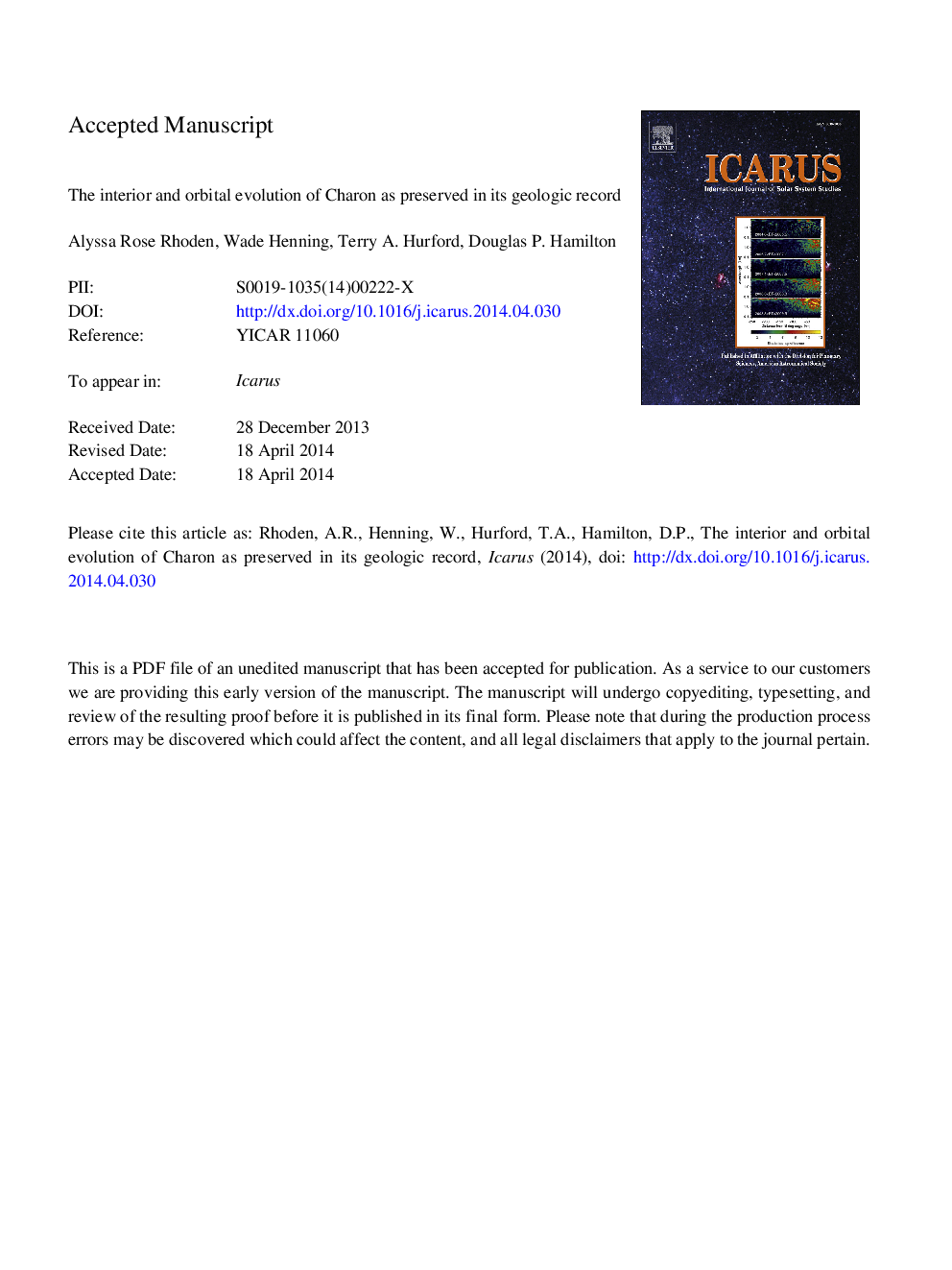| کد مقاله | کد نشریه | سال انتشار | مقاله انگلیسی | نسخه تمام متن |
|---|---|---|---|---|
| 8137171 | 1523544 | 2015 | 43 صفحه PDF | دانلود رایگان |
عنوان انگلیسی مقاله ISI
The interior and orbital evolution of Charon as preserved in its geologic record
ترجمه فارسی عنوان
تکامل داخلی و مداری چرن در رکورد زمین شناسی آن حفظ شده است
دانلود مقاله + سفارش ترجمه
دانلود مقاله ISI انگلیسی
رایگان برای ایرانیان
کلمات کلیدی
چارون، دینامیک چرخشی، تکتونیک، پلوتو، ماهواره، ماهواره ها، سطوح،
موضوعات مرتبط
مهندسی و علوم پایه
علوم زمین و سیارات
علوم فضا و نجوم
چکیده انگلیسی
Pluto and its largest satellite, Charon, currently orbit in a mutually synchronous state; both bodies continuously show the same face to one another. This orbital configuration is a natural end-state for bodies that have undergone tidal dissipation. In order to achieve this state, both bodies would have experienced tidal heating and stress, with the extent of tidal activity controlled by the orbital evolution of Pluto and Charon and by the interior structure and rheology of each body. As the secondary, Charon would have experienced a larger tidal response than Pluto, which may have manifested as observable tectonism. Unfortunately, there are few constraints on the interiors of Pluto and Charon. In addition, the pathway by which Charon came to occupy its present orbital state is uncertain. If Charon's orbit experienced a high-eccentricity phase, as suggested by some orbital evolution models, tidal effects would have likely been more significant. Therefore, we determine the conditions under which Charon could have experienced tidally-driven geologic activity and the extent to which upcoming New Horizons spacecraft observations could be used to constrain Charon's internal structure and orbital evolution. Using plausible interior structure models that include an ocean layer, we find that tidally-driven tensile fractures would likely have formed on Charon if its eccentricity were on the order of 0.01, especially if Charon were orbiting closer to Pluto than at present. Such fractures could display a variety of azimuths near the equator and near the poles, with the range of azimuths in a given region dependent on longitude; east-west-trending fractures should dominate at mid-latitudes. The fracture patterns we predict indicate that Charon's surface geology could provide constraints on the thickness and viscosity of Charon's ice shell at the time of fracture formation.
ناشر
Database: Elsevier - ScienceDirect (ساینس دایرکت)
Journal: Icarus - Volume 246, 15 January 2015, Pages 11-20
Journal: Icarus - Volume 246, 15 January 2015, Pages 11-20
نویسندگان
Alyssa Rose Rhoden, Wade Henning, Terry A. Hurford, Douglas P. Hamilton,
